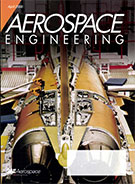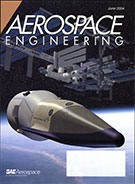Technical Paper
Numerical Investigation of Aerodynamic Characteristics on a Blunt Cone Model at Various Angles of Attack under Hypersonic Flow Regimes
2024-06-01
2024-26-0446
The study of aerodynamic forces in hypersonic environments is important to ensure the safety and proper functioning of aerospace vehicles. ...In this paper, computational analysis has been performed on a blunt cone model to study the aerodynamic characteristics when hypersonic flow is allowed to pass through the model. The flow has a Mach number of 8.44 and the angle of attack is varied from 0º to 20º. ...This study helps in understanding the aerodynamic and stability characteristics of hypersonic vehicles at various angles of attack that is significantly different from those of the subsonic or supersonic vehicles.





